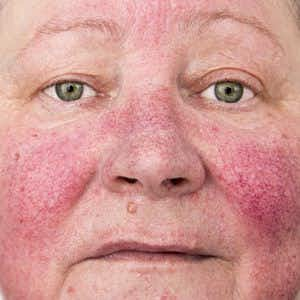
People with the skin condition rosacea often feel frustrated. To alleviate the redness of the condition, they may try over-the-counter and prescription medications. Many people report that they don’t get the results they expect, even from pricey prescriptions. We have heard, however, that you might want to try applying milk of magnesia on your rosacea.
Will You Benefit from Milk of Magnesia on Your Rosacea?
Q. I read in your column recently about using milk of magnesia topically for rosacea. I have been using metronidazole to treat my acne rosacea for several years. It costs a lot of money, but I’ve not had much success.
I tried milk of magnesia on my face starting three days ago and my rosacea has almost completely disappeared! Best of all, it cost me only $2 a bottle vs. a $200 co-pay for metronidazole.
Milk of Magnesia vs. Metrogel:
A. Metronidazole is an antimicrobial medication commonly used to treat rosacea. In this inflammatory skin condition, the face flushes easily and may stay reddened. There may be bumps that look like pimples. Thickened bumps may form, especially on the nose.
We could not find any published studies of the effects of milk of magnesia on rosacea, although many readers have been equally enthusiastic. It certainly is less expensive than your metronidazole gel.
If you need that prescription refilled, ask the pharmacist how much it would cost for you to pay out of pocket instead of using your insurance. You might be able to save money.
Will a Change in Diet Help?
Dermatologists often counsel patients to avoid triggers such as spicy foods. Specifically, hot foods (steaming coffee or soup) and foods containing capsaicin or cinnamaldehyde are on the prohibited list (Maedica, June 2018). Hot peppers and salsa trigger TRPV1, while cinnamon, citrus, chocolate and tomatoes trigger TRPA1. These transient receptor potential channels sense heat and induce flushing in people with rosacea. Sufferers may also benefit from consuming a high-fiber diet rich in prebiotics to encourage a diverse and healthy intestinal microbiota. Though it may seem unrelated, research hints at connections between the denizens of the digestive tract and those on the skin.

